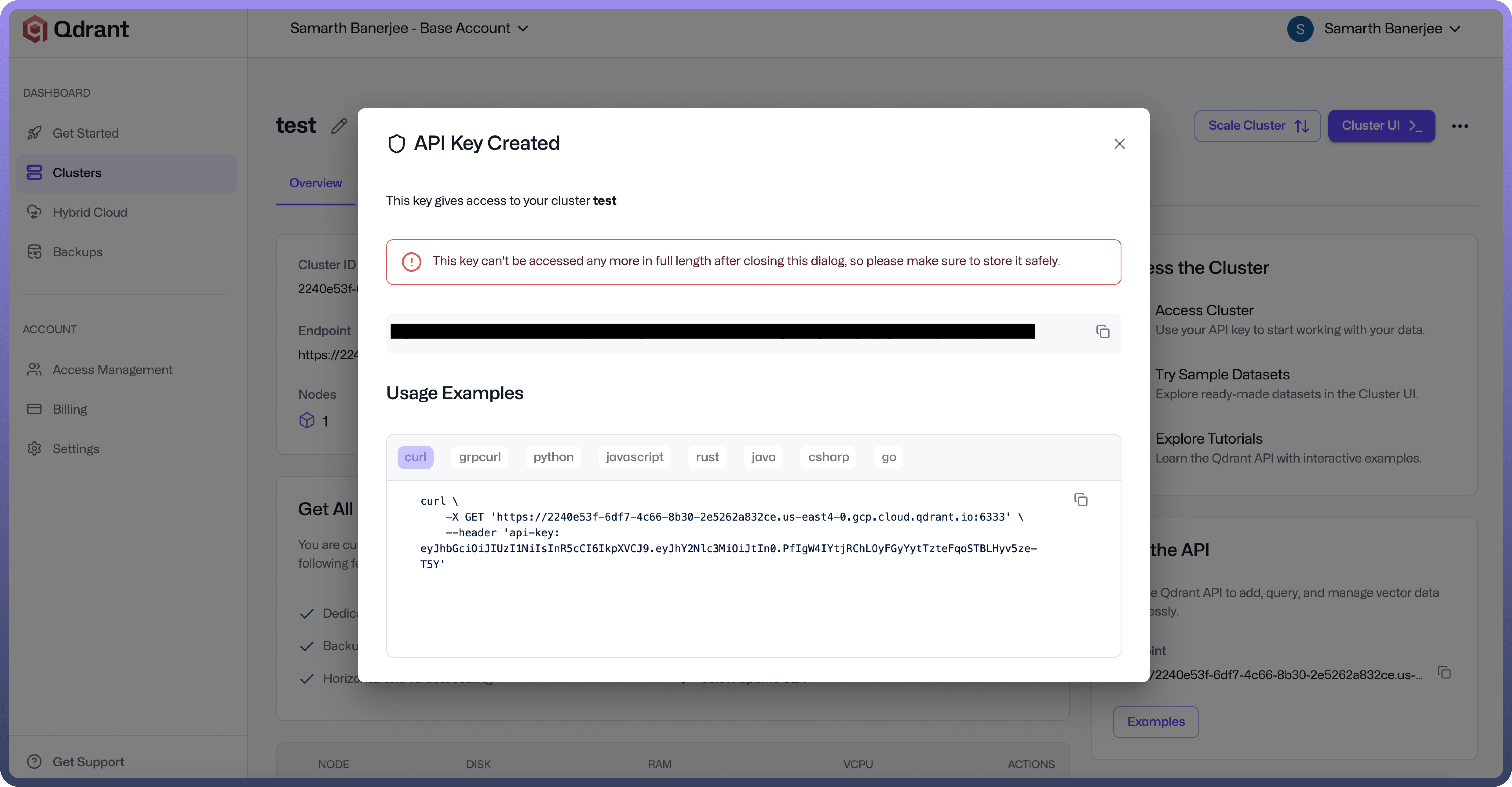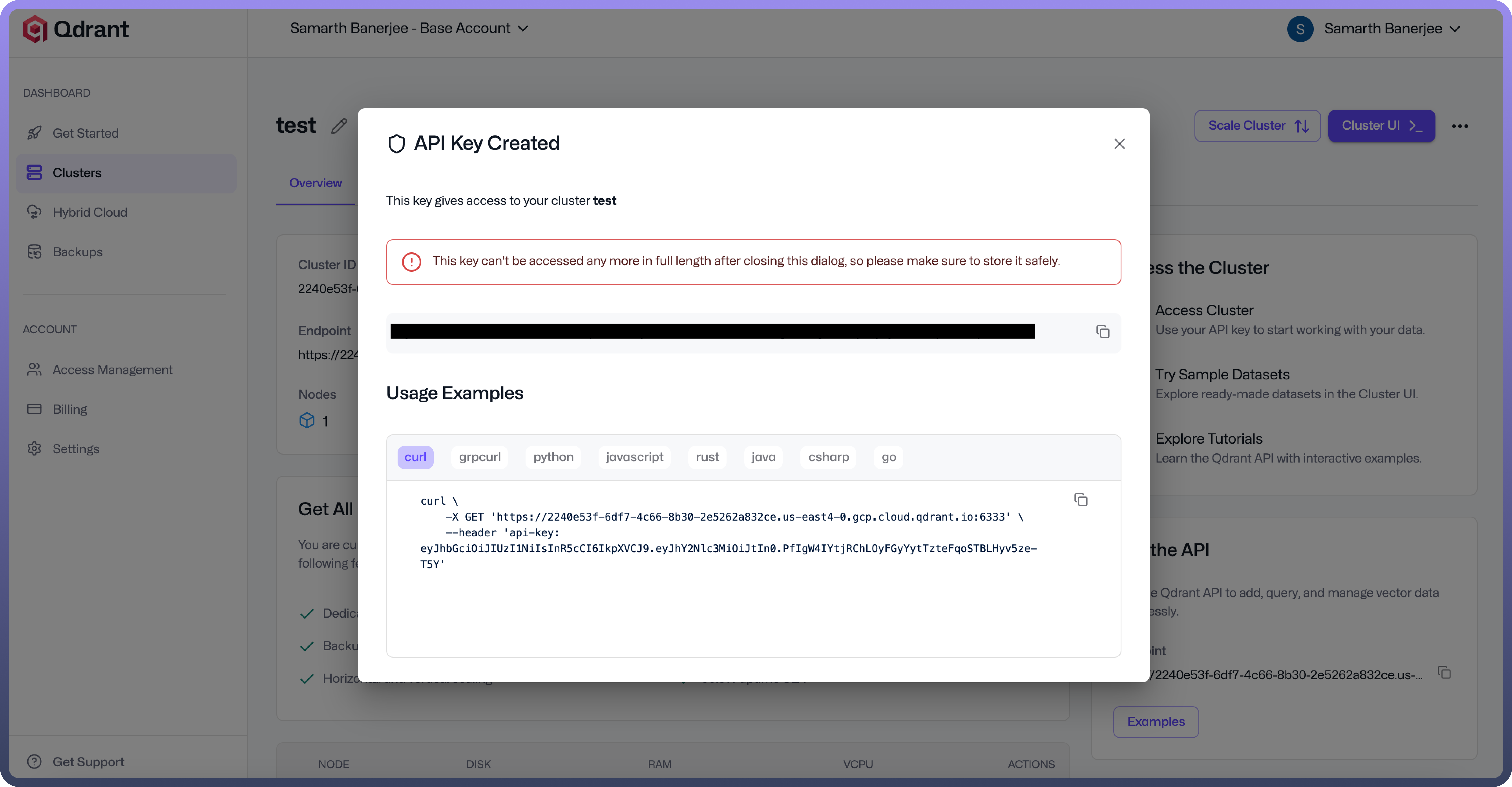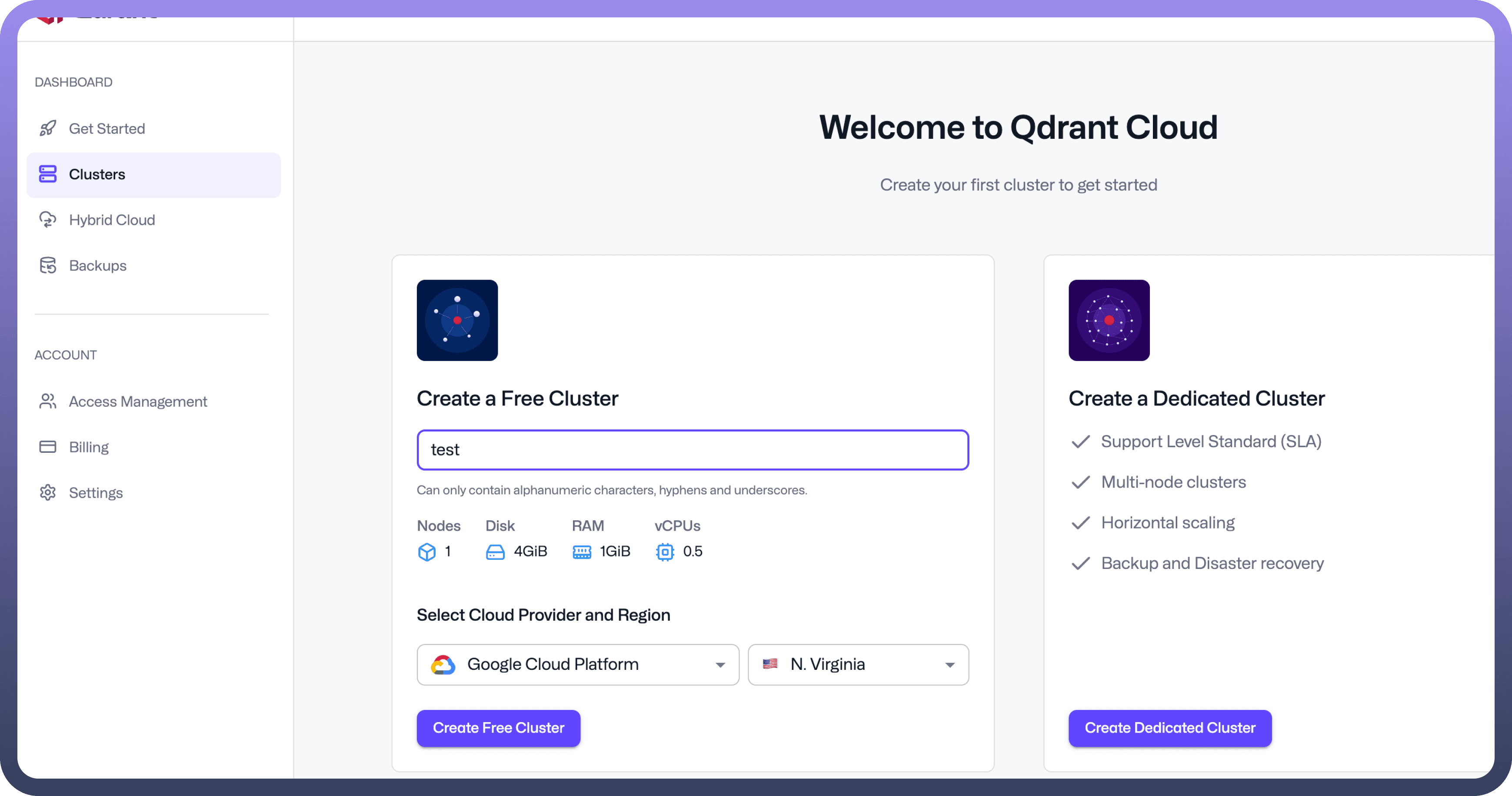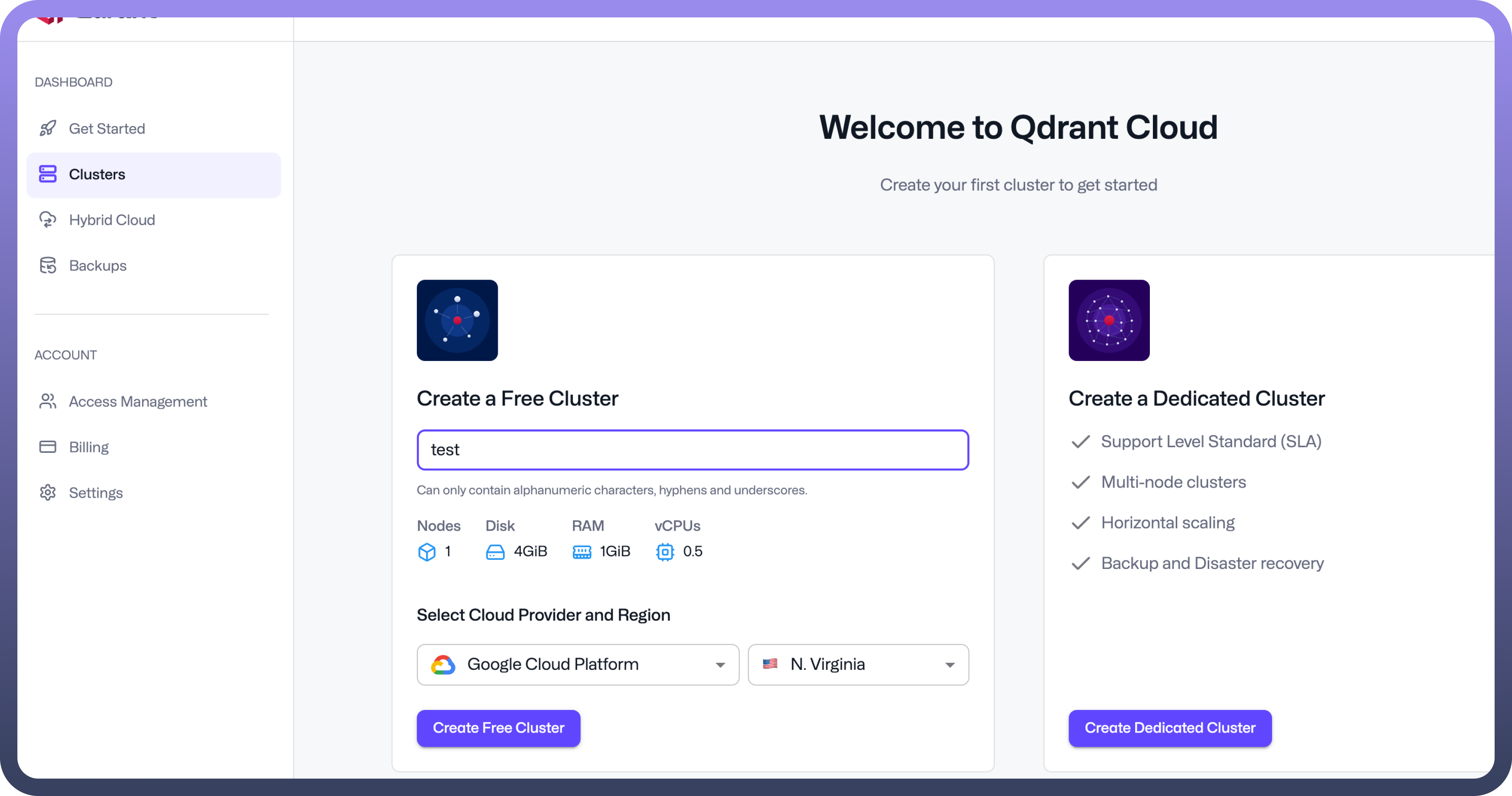Qdrant is an open-source vector database designed for high-performance similarity search and machine learning applications. It efficiently stores and retrieves high-dimensional vectors, making it ideal for powering AI features like semantic search, recommendation systems, and image/text embeddings.
Qdrant offers native support for hybrid search (vector + metadata filtering), enabling more precise and context-aware results compared to many other vector databases.
Authentication
Before you begin, make sure you have the following information:
Connection Name: Choose a meaningful name for your connection. This name helps you identify the connection within your application or integration settings. It could be something descriptive like 'MyQdrant’ .Authentication Type: Qdrat uses API Key authentication type.
API Key
Log in to the Qdrant Console.
Navigate to the
Clusterssection via the left-hand sidebar.Provision a new cluster; upon creation, an
API Key Generatedmodal will be displayed.Copy and securely store the generated
API Keyfor subsequent authenticated API access.



Actions Supported
Actions | Description |
| Batches update points in Qdrant |
| Checks a collection existence in Qdrant |
| Counts a points in Qdrant |
| Creates a collection in Qdrant |
| Creates a payload index in Qdrant |
| Creates a snapshot in Qdrant |
| Deletes a collection in Qdrant |
| Deletes a payload index in Qdrant |
| Deletes points in Qdrant |
| Deletes snapshot in Qdrant |
| Deletes vectors in Qdrant |
| Distance matrix pairs in Qdrant |
| Downloads a snapshot in Qdrant |
| Gets cluster details from Qdrant |
| Gets collection info from Qdrant |
| Gets points in batch from Qdrant |
| Lists collections from Qdrant |
| Lists snapshots from Qdrant |
| Lists snapshots storage from Qdrant |
| Query's points from Qdrant |
| Retrieves point from Qdrant |
| Retrieves points from Qdrant |
| Sets payload in Qdrant |
| Updates vectors in Qdrant |
| Upserts points in Qdrant |